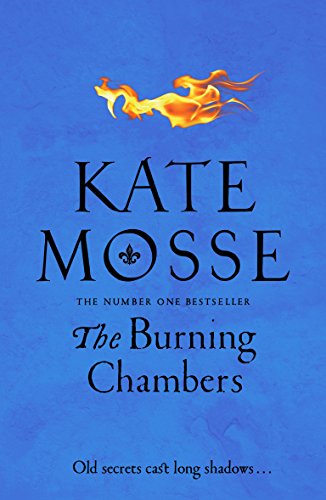Why a Booktrail?
1562,: France’s Wars of Religion are dramatically brought to life

1562,: France’s Wars of Religion are dramatically brought to life
Carcassonne 1562: Nineteen-year-old Minou Joubert receives an anonymous letter at her father’s bookshop. Sealed with a distinctive family crest, it contains just five words: SHE KNOWS THAT YOU LIVE.
But before Minou can decipher the mysterious message, a chance encounter with a young Huguenot convert, Piet Reydon, changes her destiny forever. For Piet has a dangerous mission of his own, and he will need Minou’s help if he is to get out of La Cité alive.
Toulouse: As the religious divide deepens in the Midi, and old friends become enemies, Minou and Piet both find themselves trapped in Toulouse, facing new dangers as sectarian tensions ignite across the city, the battle-lines are drawn in blood and the conspiracy darkens further.
Meanwhile, as a long-hidden document threatens to resurface, the mistress of Puivert is obsessed with uncovering its secret and strengthening her power . .
French Wars of Religion
The French wars of religion were a fascinating time but a very dangerous and violent period.
The wars were a series of eight Catholic/Huguenot conflicts which begain afer years of conflict on 1st March 1562. By 1598, it had ended when the Protestant King, Henri IV, Henri of Navarre signed the Edict of Nantes.
The royal and walled historic city of Carcassonne plays a major role in the novel and in the wars themselves. It’s where the story starts in the bookshop where Minou works and finds the note.
‘The first rays of the sun were beginning to warm the air, setting spirals of mist dancing above the cobbled stones. The Place du Grand Puits looked tranquil in the pink light. Minou breathed in, feeling the shock of the cold in her lungs, then set off towards the main gates which led in and out of La Cite.”
The city is noisy and the streets narrow and dusty. The houses leaning in towards one another as if drunk, their tiled roofs so close as to be almost touching”
“The scene could be one from a hundred years before…..In La Cite, life went on the same, day after day, after day.”
In Toulouse between 13th and 16th May 1562, more than 4, 000 people were slaughtered.
“Toulouse was a city of of shimmering green, the skies above la ville Rose a forget-me-not-blue, white clouds and pale-blue violets flourishing in window boxes. When the sun rose at dawn and fell back to earth at dusk, it lit the rust-brick buildings, sparking like a tinder box, until the whole city glistened a fiery copper and gold.
The castle plays a major role in the novel as it did in the French Civil Wars:
“The land surrounding the Chateau de Puivert was in darkness, Pinpricks of light in one or two of the houses in the village below broke the blackness and the single bobbing lamp of the shepherd minding his flock. There were wild dogs in the hills, becoming bolder by the day and several animals had been killed.
“In the soldiers mess in the Tour Bossue, a small fire warmed the midnight of the room …”
Susan: @thebooktrailer
You can always depend on Kate Mosse for not just evoking a time and place in history but for dragging you in feet first and immersing you in the dirt, emotions, violence and day to day struggles of the time. It’s an epic read this one but what a reading experience! Having studied French I know a little about the period but not like this and I’ve never lived through it or experienced in in the way I did here. The level of research is astounding but the cleverest parr of it is how smooth yet passionate it reads. I was particularly excited to learn that the story started with a mysterious letter arriving at an old bookshop deep in the old city….if that doesn’t get the book tingles going, I don’t know what will.
The book starts slow but steady but the build up is more than worth it – in fact this must have been how the war and the fear of war built up for those living through it. The religious wars were between the Catholics and Huguenots and each of their backstories and historical battles were carefully introduced and explained. Minou was a great character to have as the voice of the people, with her actions ahead of her time. Piet too was a strong and very likeable character – an when the two meet – the Romeo and Juliet of their time – a wonderfully evocative and emotional story ensues.
Definitely recommended – French history in the hands of Kate Mosse is like stepping into a time machine with a guide who really understands and loves the thrill of literary travel.
Destination : Carcassonne, Toulouse, Puivert Author/Guide: Kate Mosse Departure Time: 1562 onwards
Back to Results1910. 1970s :In the middle of a severe storm two sisters rescue a mysterious man from a shipwreck.
Read more